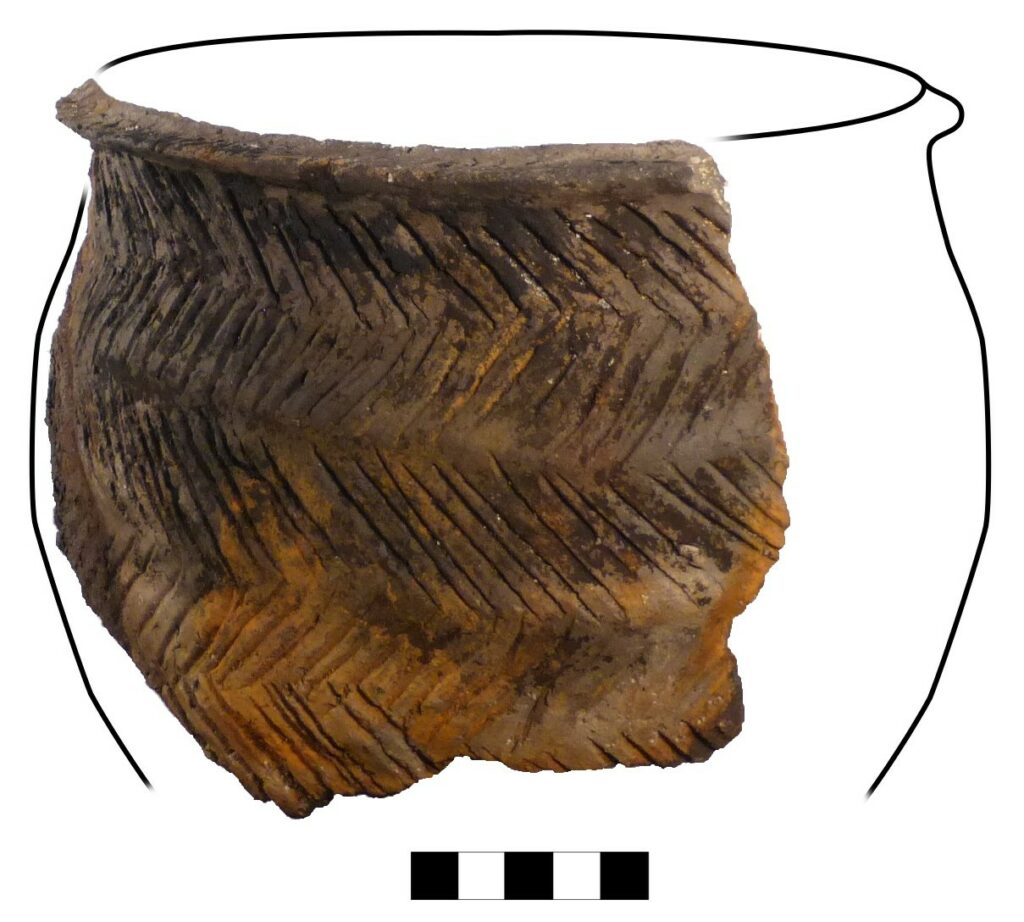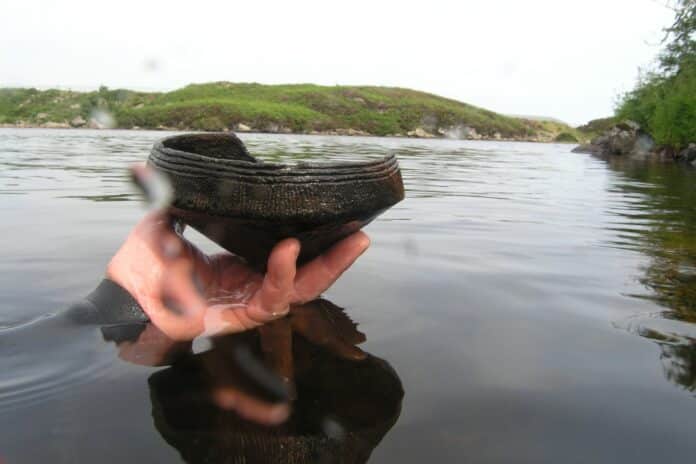The consumption of domesticated plants and animals first emerged in Britain and Ireland around 4000 BCE. It accompanies other novel traditions, practices, and technology, including the use of pottery and new settlement and funerary practices. However, despite archaeobotanical evidence for domesticated plants (such as cereals), organic residue evidence has been near-absent.
Using chemical analysis of ancient and incredibly well-preserved pottery found in the waters surrounding small artificial islands called crannogs in Scotland, a team of scientists led by the University of Bristol has uncovered intriguing new insights into the diet of people living in Neolithic Britain. Their study showed that cereals were cooked in pots and mixed with dairy products and occasionally meat, probably to create early forms of gruel and stew. They also found that the people visiting these crannogs used smaller pots to cook cereals with milk and larger pots for meat-based dishes.
An earlier study of Roman pottery at Vindolanda (Hadrian’s Wall) showed that a high-sensitivity method could detect specific lipid markers for cereals that can survive absorbed in archeological pottery that has been maintained in waterlogged conditions. However, importantly this was ‘only’ 2,000 years old and from contexts where cereals were well-known to have been present.
According to this new study, cereal biomarkers can be preserved for thousands of years under favorable conditions.
Another fascinating fact of the study: the pots that scientists used were intact and decorated, suggesting they may have had some ceremonial purpose. Since the actual function of the crannogs themselves is not fully understood yet (with some being far too small for permanent occupation), the research provides new insights into possible ways these constructions were used.

The investigation revealed that a large percentage of the pots contained cereal biomarkers, the earliest biomolecular proof of cereals in absorbed pottery residues in this area. It was also found that wheat was being cooked in pots, even though the limited evidence from charred plant parts in this region of Atlantic Scotland points mainly to barley.
This may be due to the underrepresentation of wheat in charred plant remains due to its versatility in cooking methods (such as boiling it as a component of stews), which makes it less frequently charred, or it may be the result of more unique cooking techniques.
Drs Simon Hammann from the University of Bristol’s Department of Anthropology and Archaeology said, “It’s very exciting to see that cereal biomarkers in pots can survive under favorable conditions in samples from the time when cereals (and pottery) were introduced in Britain. Our lipid-based molecular method can complement archaeobotanical methods to investigate the introduction and spread of cereal agriculture.”
Lucy Cramp from the University of Bristol’s Department of Anthropology and Archaeology said, “This research gives us a window into the culinary traditions of early farmers living at the northwestern edge of Europe, whose lifeways are little understood. It gives us the first glimpse of the sorts of practices that were associated with these enigmatic islet locations.”
Duncan Garrow from the University of Reading and Fraser Sturt from the University of Southampton said, “This research, undertaken by our colleagues at the University of Bristol, has hugely improved our knowledge of these sites in many exciting ways. We very much look forward to developing this collaborative research going forwards.”
Journal Reference:
- Hammann, S., Bishop, R.R., Copper, M. et al. Neolithic culinary traditions revealed by cereal, milk and meat lipids in pottery from Scottish crannogs. Nat Commun 13, 5045 (2022). DOI: 10.1038/s41467-022-32286-0
